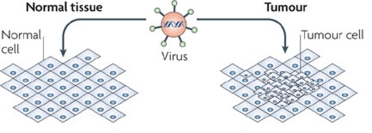There is currently a real push in the field of oncolytic virotherapy to create tightly cancer-targeted viruses that minimise side-effects in normal healthy tissues. Yet new research from North Carolina State University suggests that using a less stringently targeted virus might be better at achieving tumour control.

It’s really important to generate large numbers of virus particles both at the beginning and end of oncolytic virotherapy. A huge burst of virus particles descending on the tumour gets the treatment off to an excellent start, and keeping virus levels high as the tumour shrinks ensures that no cancer cells escape.
The problem is that when the virus starts blasting through tumour cells, it is essentially removing a huge source of host cells – and thus its own capacity to replicate. On a practical level, this means that virus levels begin to decline with the tumour mass. Once the immune response becomes activated, the virus population slumps even further. This can allow tumours to relapse.
Happily, mathematical models predict that using a leaky virus that not only infects tumour cells but also a controlled number of healthy cells can maintain virus supplies. These mini virus factories could potentially be safely set up in organs like the liver that are capable of recovering by regenerating after virus infection.
Image adapted from Nature Reviews Immunology 9, 645-655 (September 2009)
Repost from the Stojdl Lab blog.




